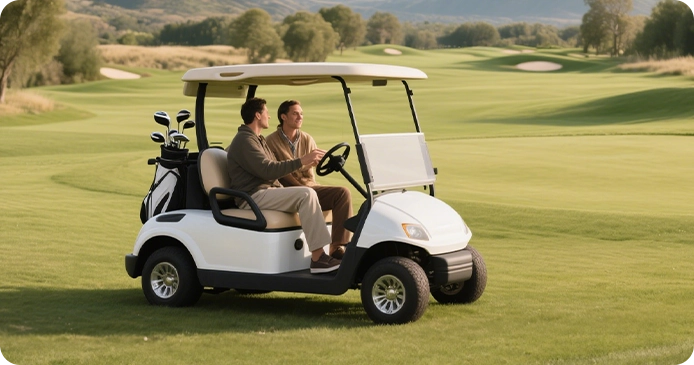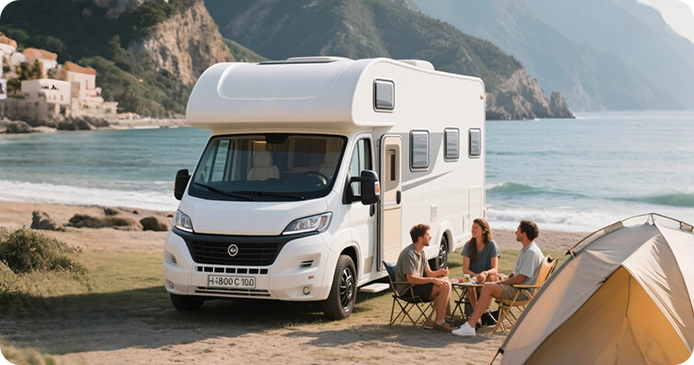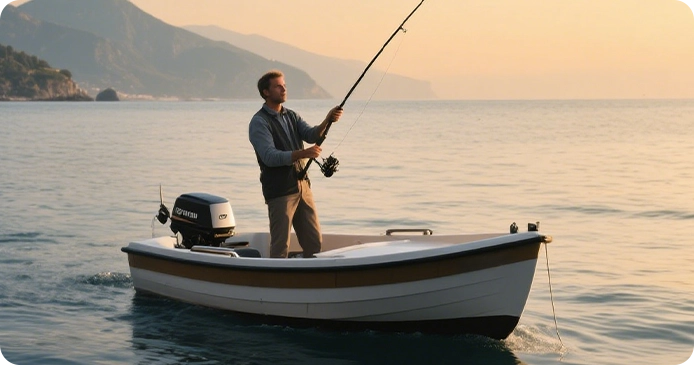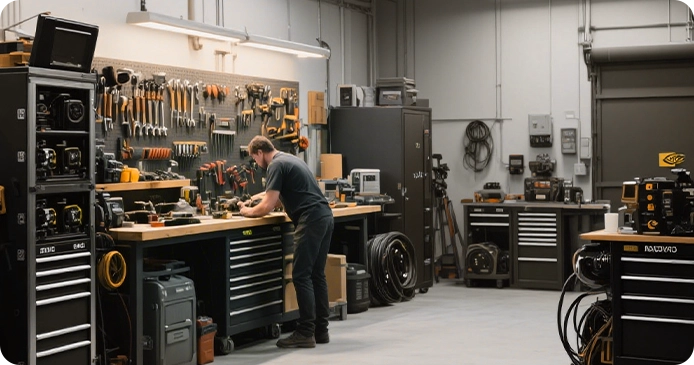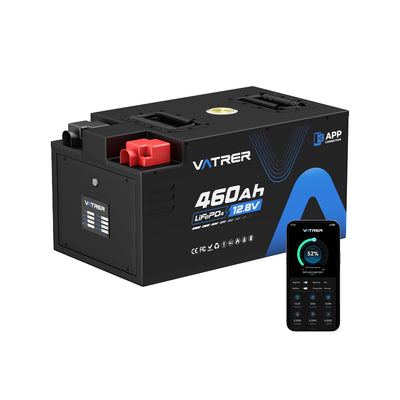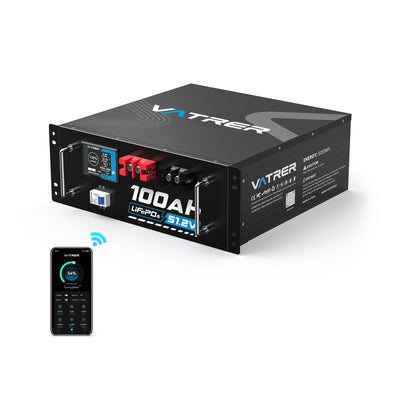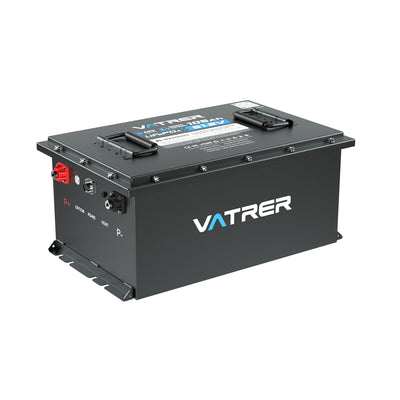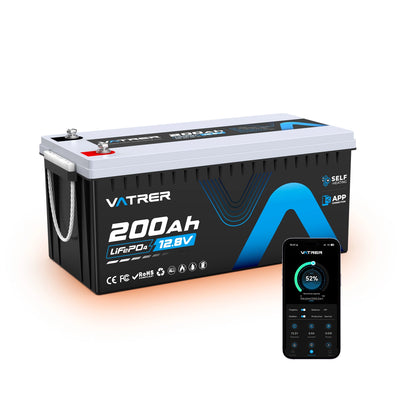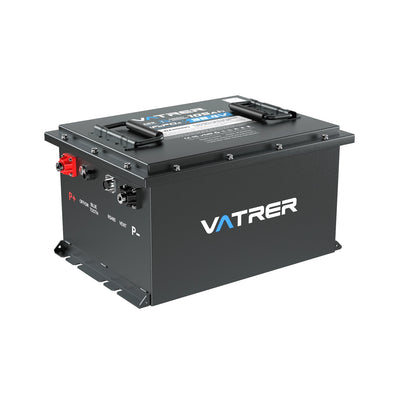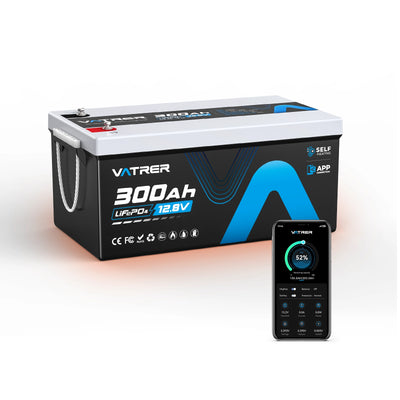Ein vierrädriges Fahrzeug, egal ob ATV, UTV oder Kompakt-Nutzfahrzeug, ist stark auf seine Batterie angewiesen, um das elektrische System stabil zu halten, Zubehör zu versorgen und zuverlässige Starts im Alltag oder bei Offroad-Abenteuern zu gewährleisten. Die Wahl der richtigen Batterie ist daher nicht nur wichtig, um von A nach B zu kommen. Sie beeinflusst Sicherheit, Leistung und die langfristige Zuverlässigkeit Ihres Fahrzeugs.
Dieser Leitfaden erklärt, worauf es am wichtigsten ist, wie sich verschiedene Arten von ATV-Batterien vergleichen lassen und wie Sie diejenige auswählen, die zu Ihrem Fahrstil, dem Klima und Ihrem Budget passt.
Was eine Vierradbatterie in Ihrem elektrischen System bewirkt
Die Batterie eines Geländewagens funktioniert anders als eine typische Autobatterie. ATVs und UTVs sind Vibrationen, Schlamm, steilen Anstiegen, viel Zubehör und mitunter extremen Temperaturen ausgesetzt. Eine geeignete Batterie muss daher:
Um den Motor zu zünden, müssen kurze, kraftvolle Impulse abgegeben werden.
Eine konstante Stromversorgung für Beleuchtung, Sensoren, GPS-Geräte, Seilwinden und Infotainmentsysteme gewährleisten.
Bleibt auch bei starken Vibrationen oder unwegsamem Gelände stabil.
Gleichbleibende Leistung bei Kälte oder Hitze.
Mit anderen Worten: Die Batterie ist nicht einfach nur ein Anlasser, sondern das Rückgrat der elektrischen Stabilität Ihres Fahrzeugs.
Wichtige Parameter bei der Auswahl einer Batterie für Vierräder
Die Wahl der richtigen Batterie wird wesentlich einfacher, wenn man die Parameter versteht, die Startleistung, Lebensdauer, Passgenauigkeit und Leistung beeinflussen.
Spannung: Die Grundlage Ihres elektrischen Systems
Die meisten Vierräder verwenden eine 12-V-Batterie. Die Abstimmung der Spannung auf das Fahrzeugsystem verhindert Bauteilschäden und gewährleistet eine stabile elektrische Leistung.
Einige leistungsorientierte ATVs verwenden 14V- oder 16V-Systeme, diese erfordern jedoch eine spezielle Verkabelung und sollten nur unter Anleitung des Benutzerhandbuchs oder eines Mechanikers aufgerüstet werden.
Hinweis : Wenn in Ihrer ATV-Bedienungsanleitung 12 V angegeben sind, verwenden Sie unbedingt 12 V. Eine falsche Spannung kann empfindliche Elektronik beschädigen.
Kapazität (Amperestunden, Ah): Wie lange die Batterie Strom liefern kann
Die Kapazität gibt an, wie viel gespeicherte Energie die Batterie über einen längeren Zeitraum bereitstellen kann.
Höhere Ah-Werte bedeuten:
Längere Laufzeit für Zubehör.
Bessere Unterstützung für Winden, Soundsysteme oder Arbeitsgeräte.
Stärkere Leistung für Langstreckenfahrer.
Höhere Kapazität bedeutet jedoch in der Regel einen schwereren Akku, was sich insbesondere in anspruchsvollem Gelände bemerkbar machen kann. Eher geeignet für lange Touren, schweres Zubehör, Nutzfahrzeuge oder häufigen Offroad-Einsatz.
Kaltstartstrom (CCA): Zuverlässiges Starten bei Kälte
Die Kaltstartleistung (CCA) gibt an, wie viel Strom eine Batterie bei kalten Temperaturen liefern kann.
Sie werden auch Kaltstartstrom (CCA) sehen, der sich auf dieselbe Kennzahl bezieht.
Höherer Kaltstartstrom bedeutet besseres Kaltstartverhalten.
Dies ist von entscheidender Bedeutung, wenn Sie:
Lebe in einer kalten Region.
Fahren Sie im Winter.
Besitzen Sie einen Motor mit großem Hubraum.
Eine Batterie mit höherem Kaltstartstrom (CCA) bietet mehr Vertrauen und Sicherheit unter unvorhersehbaren Bedingungen.
Reservekapazität (RC): Notstromversorgung für Notfälle
Die Reservekapazität misst, wie lange die Batterie wichtige Systeme mit Strom versorgen kann, wenn das Ladesystem ausfällt.
Eine höhere RC-Bewertung trägt dazu bei, dass Scheinwerfer, Zündung und Sicherheitselektronik lange genug funktionieren, um Sie sicher nach Hause zu bringen.
Abmessungen und Anschlusstyp: Für eine perfekte Passform
Die Batterie muss fest im Batteriefach sitzen.
Überprüfen:
Länge × Breite × Höhe.
Terminalausrichtung.
Anschlusstyp (obenliegender Anschluss, seitlicher Anschluss, Schnellanschluss).
Eine lose Verbindung kann zu Vibrationsschäden führen, während nicht zusammenpassende Anschlüsse schlechte Verbindungen oder Kurzschlüsse verursachen können.
Gewicht: Beeinflusst Fahrverhalten und Kraftstoffverbrauch
Leichte Batterien verbessern Beschleunigung und Manövrierfähigkeit, was sich besonders auf engeren Pfaden oder in steilem Gelände bemerkbar macht.
Aus diesem Grund steigen viele Fahrer auf Lithiumbatterien um, die bekanntermaßen deutlich leichter sind als bleihaltige Batterien.
Vergleich der gängigen Batterietypen für Vierradfahrzeuge
Unterschiedliche Batterietechnologien weisen je nach Fahrbedingungen und Budget unterschiedliche Leistungen auf. Kenntnisse über die gängigen Typen helfen, die Auswahl einzugrenzen.
a. Geflutete Blei-Säure-Batterien
Diese herkömmlichen Batterien erfordern regelmäßige Wartungsarbeiten, darunter das Nachfüllen von Wasser und die Überprüfung auf Korrosion.
Erschwinglich.
Wartungsfreundlich.
Geeignet für gelegentlichen Gebrauch mit geringen Anforderungen.
Sie sind jedoch schwerer, weniger vibrationsfest und laden langsamer. Geeignet für preisbewusste Fahrer mit minimalem elektronischem Zubehör.
b. AGM-Batterien (Absorbent Glass Mat)
AGM-Batterien (Absorbent Glass Mat) fangen den Elektrolyten in Glasfasermatten ein, wodurch sie wartungsfrei und vibrationsbeständig sind.
Starke Startleistung.
Zuverlässige Leistung auch bei Kälte.
Schnelleres Aufladen.
Ausgezeichnete Vibrationsfestigkeit.
AGM ist oft die beste Allround-Wahl für ATVs und UTVs, die sowohl beruflich als auch in der Freizeit eingesetzt werden.
c. Lithiumbatterien
Lithiumbatterien sind zur ersten Wahl für Fahrer geworden, die ein leistungsstarkes Upgrade wünschen.
Sehr leicht.
Hohe Energiedichte.
Schnellladung.
Hohe Ausgangsleistung.
Sie bieten hervorragende Leistung bei extremen Temperaturen und halten die Spannung auch unter hoher Belastung konstant. Die Anschaffungskosten sind zwar höher, aber die lange Lebensdauer und der hohe Bedienkomfort rechtfertigen dies oft. Geeignet für Fahrer, die Wert auf Langlebigkeit, geringes Gewicht und langfristige Wertbeständigkeit legen.
d. Gelbatterien
Gelbatterien verwenden einen verdickten Elektrolyten, wodurch sie auslaufsicher und vibrationsfest sind.
Gut geeignet für den Dauereinsatz (Seilwinden, Arbeitszubehör).
Geeignet für gemischtes Gelände.
Die Verfügbarkeit ist weniger verbreitet und die Leistung liegt tendenziell zwischen AGM und Blei-Säure.
Vergleichstabelle der Batterietypen
Akku-Typ
Wartung
Gewicht
Haltbarkeit
Kaltleistung
Am besten geeignet für
Geflutete Blei-Säure
Regelmäßige Wartung erforderlich
Schwer
Mäßig
Mäßig
Budget-Fahrer
Hauptversammlung
Wartungsfrei
Mäßig
Hoch
Hoch
Geländeeinsatz / täglicher Einsatz
Lithium
Wartungsfrei
Sehr leicht
Sehr hoch
Sehr hoch
Leistungsfahrer
Gel
Wartungsfrei
Mäßig
Hoch
Mäßig
Tiefzyklusbedarf
Wie Sie die beste Vierradbatterie für Ihre Fahrbedürfnisse auswählen
Die Wahl der richtigen Batterie für Ihr Quad wird deutlich einfacher, wenn Sie Ihre Fahrbedingungen, Ihren Strombedarf, das Klima und Ihre langfristigen Erwartungen berücksichtigen. Im Folgenden finden Sie einen praktischen Bewertungsvorschlag, der Ihnen hilft, die beste Wahl für Ihre individuellen Bedürfnisse zu treffen.
1. Analysiere deinen Fahrstil und deine Fahrhäufigkeit.
Ihre Fahrgewohnheiten haben einen großen Einfluss darauf, welche Batteriechemie sinnvoll ist.
Für kurze, gelegentliche Fahrten eignet sich ein Standard-AGM gut, da er Kosten, Zuverlässigkeit und geringen Wartungsaufwand in Einklang bringt.
Bei Langstreckentouren oder ganztägigen Offroad-Touren verhindert eine Batterie mit höherer Ah-Kapazität und stärkerer Vibrationsfestigkeit, üblicherweise eine AGM- oder Lithiumbatterie, Spannungsabfälle und gewährleistet eine stabile Leistungsabgabe.
Hochleistungseinsatz: z. B. bei Bergfahrten, Sprints im Sand oder häufigem Seilwindeneinsatz. Lithium-Batterien bieten geringeres Gewicht und zuverlässige Leistung unter Dauerlast.
Tipp : Wenn Sie bei Ihren Fahrten häufig Zubehör über längere Zeiträume im Leerlauf verwenden, wählen Sie eine höhere Ah-Zahl und eine höhere RC-Zahl für die Pufferkapazität.
2. Berücksichtigen Sie Ihr elektrisches System und die angeschlossenen Verbraucher.
Moderne ATVs haben oft mehr Zusatzausstattungen, als man erwarten würde.
Zubehör, das den Batteriebedarf erhöht, umfasst:
Winden
Beheizbare Griffe oder beheizbare Sitze
LED-Leisten und Zusatzbeleuchtung
Navigation / GPS
Bluetooth-Lautsprecher oder Infotainment
12-V-Kühler oder tragbare Werkzeuge
Bei hohem Stromverbrauch sollten Sie Folgendes priorisieren:
Höhere Ah-Zahl (für längere, anhaltende Leistung)
Höhere RC (für Notkapazität bei Ausfall des Ladesystems)
Lithium- oder AGM-Batterien liefern unter Last eine stabile Spannung.
Hinweis : Geflutete Blei-Säure-Batterien können bei wiederholten Tiefentladungen, die durch häufigen Zubehörgebrauch verursacht werden, Probleme haben.
3. Passen Sie die Batterieleistung an Ihr Klima an.
Das Klima spielt eine große Rolle bei der Wahl des richtigen ATV-Batterietyps.
Kalte Klimazonen (Schneegebiete oder Winterfahrten): Höhere Kaltstartleistung (CCA) ist wichtig. AGM- und Lithiumbatterien sind bei Kälte besser geeignet als herkömmliche Blei-Säure-Batterien.
Heiße Klimazonen: Hitze beschleunigt den Verschleiß von Batterien. Lithiumbatterien bieten eine bessere thermische Stabilität und eine längere Lebensdauer bei extremen Temperaturen.
Große Temperaturschwankungen: Wählen Sie chemische Werkstoffe mit hoher Temperaturtoleranz (AGM oder Lithium).
4. Ermitteln Sie Ihr Gelände und den Vibrationsgrad
Wenn Ihr ATV häufig folgenden Belastungen ausgesetzt ist:
felsigen Pfaden
Wellblechstraßen
steile Anstiege
unebenes Ackerland
starke Vibrationen durch Versorgungsarbeiten
Dann benötigen Sie eine Batterie mit hoher struktureller Integrität.
AGM ist dank seiner versiegelten Glasfasermattenkonstruktion vibrationsbeständig.
Lithiumbatterien bieten die beste innere Stabilität und das geringste Gewicht, was das Fahrverhalten auf unebenem Gelände verbessert.
Hinweis : Geflutete Blei-Säure-Batterien sind in rauen Umgebungen nicht ideal, da sich ihr flüssiger Elektrolyt bei Stößen bewegt.
5. Wartungspräferenzen und Besitzerfahrung berücksichtigen.
Vorteil Wartungsfreiheit: AGM- und Lithiumbatterien sind beide wartungsfrei.
Bereitschaft, den Wasserstand zu prüfen und die Anschlüsse zu reinigen: Überflutete Blei-Säure-Batterien können akzeptabel sein, wenn das Budget knapp ist.
Für ein unkompliziertes Fahrerlebnis sind Lithiumbatterien die einfachste Langzeitlösung. Sie haben zudem eine längere Lebensdauer, wodurch sich die Austauschhäufigkeit reduziert.
6. Budget vs. langfristiger Wert abwägen
Die anfänglichen Kosten und die langfristigen Einsparungen weichen oft voneinander ab.
Geflutete Blei-Säure-Batterien sind zwar in der Anschaffung am günstigsten, haben aber die kürzeste Lebensdauer.
AGM-Batterien bieten eine hohe Leistung zu moderaten Kosten.
Lithiumbatterien sind in der Anschaffung teurer, bieten aber eine hohe Lebensdauer, ein geringes Gewicht und müssen seltener ausgetauscht werden.
Vergleicht man die Ausgaben über die Jahre des Besitzes, erweist sich Lithium oft als die kostengünstigste Option.
7. Passgenauigkeit prüfen: Größe, Gewicht und Anschlussbelegung
Bitte vor dem Kauf Folgendes prüfen:
Batterieabmessungen
Terminalausrichtung
Gewichtstoleranz Ihres Fachs
Kompatibilität mit dem werkseitigen Ladesystem
Bei Lithium-Upgrades kann es auch erforderlich sein, die Kompatibilität des Ladegeräts zu überprüfen, obwohl moderne Systeme oft ohne Modifikation funktionieren.
Die Wahl der optimalen Batterie für Ihr Quad wird einfacher, wenn Sie alle Faktoren berücksichtigen: Fahrstil, Strombedarf, Wetterbedingungen, Gelände, Wartungsaufwand und Ihr Budget. Durch die gemeinsame Bewertung dieser Faktoren können Sie sicher entscheiden, ob eine herkömmliche Blei-Säure-Batterie, eine vibrationsfeste AGM-Batterie oder eine leichte Lithium-Batterie Ihren Bedürfnissen entspricht.
Maximale Akkulaufzeit durch richtige Pflege
Selbst die beste Batterie profitiert von guten Gewohnheiten.
So verlängern Sie Ihre Lebensspanne:
Halten Sie den Akku geladen: Laden Sie ihn nach jeder Fahrt auf, insbesondere wenn Zubehör wie Scheinwerfer, Kühlboxen oder Seilwinden verwendet werden.
Vermeiden Sie Tiefentladungen: Tiefentladungen verkürzen die Lebensdauer von Batterien aller chemischen Zusammensetzungen. Halten Sie den Ladezustand nach Möglichkeit immer über 50 %.
Halten Sie die Anschlüsse sauber: Schmutz und Korrosion erhöhen den Widerstand und verringern die Ladeeffizienz.
Schützen Sie Ihren Akku vor extremer Hitze oder Kälte: Verwenden Sie im Winter Schutzhüllen und vermeiden Sie im Sommer längere direkte Sonneneinstrahlung.
Tipp : Um eine Selbstentladung zu vermeiden, sollte der Akku in den Wintermonaten an einem intelligenten Ladegerät aufbewahrt werden.
Wie Wasserbatterien Ihnen bei der Auswahl helfen können
Bei der Wahl eines Akku-Upgrades achten viele Fahrer auf lange Lebensdauer, hohe Leistung, sicheren Betrieb und stabile Performance unter Last.
Hier erweist sich die Vatter-Batterie als praktische Wahl für ATVs und UTVs:
Hochwertige LiFePO4-Lithiumchemie für lange Lebensdauer
Fortschrittliches Batteriemanagementsystem (BMS) zum Schutz vor Überhitzung, Überladung und Kurzschluss
Natürlich wartungsfreies Design
Leichtbauweise für besseres Handling
Konstante Startzuverlässigkeit bei extremen Temperaturen
Schnelleres Laden und längere Lebensdauer als herkömmliche bleihaltige Optionen
Wenn Sie auf ein moderneres und robusteres Antriebssystem umsteigen möchten, kann die Verwendung einer Vatter-Lithiumbatterie sowohl die Zuverlässigkeit als auch den Fahrkomfort auf lange Sicht verbessern.
Abschluss
Die Wahl der richtigen Batterie für Ihr Quad muss weder kompliziert noch überfordernd sein. Sobald Sie die Zusammenhänge von Spannung, Kapazität, Kaltstartstrom (CCA), Batterietyp und deren Einfluss auf die Leistung verstehen, wird die Entscheidung deutlich einfacher.
Eine optimal abgestimmte Batterie sorgt für zuverlässiges Starten Ihres ATV oder UTV, verstärkt die Leistung von Zubehör und ermöglicht komfortablere Fahrten in jedem Gelände. Bei richtiger Pflege gewährleistet die passende Batterie jahrelange zuverlässige Nutzung – egal ob im Alltag, auf anspruchsvollen Offroad-Strecken oder bei der Arbeit im Freien.
Wenn Sie Leistung, Stabilität und Benutzerfreundlichkeit weiter verbessern möchten, sollten Sie ein Upgrade auf die technologisch höherwertige Vatter Lithium-Serie in Betracht ziehen – für ein einfacheres, langlebigeres und sorgenfreieres Fahrerlebnis mit Ihrem Quad.
Häufig gestellte Fragen
Kann ich eine Batterie mit höherer Ah-Zahl oder höherem Kaltstartstrom (CCA) als die Originalbatterie verwenden?
In den meisten Fällen ist die Verwendung einer Batterie mit höherer Ah-Zahl (Kapazität) oder höherem Kaltstartstrom (CCA) als die Originalbatterie akzeptabel und kann sogar von Vorteil sein, solange Spannung und Abmessungen den Anforderungen des Fahrzeugs entsprechen.
Eine höhere Ah-Zahl bedeutet, dass die Batterie Ihr elektrisches System länger unterstützen kann, was hilfreich ist, wenn Sie Seilwinden, zusätzliche Beleuchtung oder anderes Zubehör betreiben.
Eine höhere Kaltstartleistung (CCA) trägt dazu bei, zuverlässiges Starten bei kaltem Wetter oder mit größeren Motoren zu gewährleisten.
Die wichtigsten Punkte sind Passgenauigkeit und Ladefunktion: Der Akku muss fest im Gehäuse sitzen, und Ihr Ladesystem muss den Akku mit höherer Kapazität während der normalen Fahrt wieder vollständig aufladen können. Bei sehr kurzen Fahrten kann ein Akku mit übermäßig hoher Amperestundenzahl (Ah) möglicherweise nie vollständig aufgeladen werden und mit der Zeit vorzeitig ausfallen.
Kann ich bei meinem ATV oder UTV von herkömmlichen Blei-Säure-Batterien auf Lithium-Batterien umsteigen?
Ja, viele Motorradfahrer steigen erfolgreich von herkömmlichen Bleiakkumulatoren auf Lithiumakkumulatoren um, um Gewicht zu sparen und die Leistung zu verbessern. Wichtig ist dabei, die Systemspannung beizubehalten und die Kompatibilität mit Regler und Ladegerät zu überprüfen.
Lithiumbatterien mit integriertem Batteriemanagementsystem (BMS) sind für den Einsatz in den meisten Powersport-Ladesystemen ausgelegt, es empfiehlt sich jedoch, die Empfehlungen des Herstellers zu beachten.
Einige ältere Ladegeräte verwenden höhere Spannungen oder Ausgleichsmodi, die für geflutete Bleiakkumulatoren gedacht sind und für Lithium-Akkumulatoren nicht geeignet sind.
Warum entlädt sich die Batterie meines Quads ständig, obwohl es neu ist?
Eine neue Batterie, die sich ständig entlädt, deutet in der Regel auf ein Problem außerhalb der Batterie selbst hin.
Häufige Ursachen sind Kriechströme von Zubehör, das direkt an die Batterie angeschlossen ist, wie z. B. GPS-Geräte, Handy-Ladegeräte, nachträglich eingebaute Leuchten oder Alarmanlagen, die auch bei ausgeschalteter Zündung Strom verbrauchen.
Auch kurze, seltene Fahrten können ein Problem darstellen, da das Ladesystem möglicherweise nicht genügend Zeit hat, die zum Starten des Motors und zum Betrieb des elektrischen Systems benötigte Energie zu ersetzen.
In manchen Fällen kann ein defekter Regler oder Stator das ordnungsgemäße Laden der Batterie vollständig verhindern. Ein einfacher Multimetertest an den Batteriepolen bei ausgeschaltetem und anschließend laufendem Motor kann Aufschluss darüber geben, ob das Ladesystem funktioniert. Steigt die Spannung bei laufendem Motor nicht an, liegt das Problem wahrscheinlich nicht an der Batterie.
Ist es sicher, ein Autobatterieladegerät für meine ATV- oder Lithiumbatterie zu verwenden?
Die Verwendung eines beliebigen Autoladegeräts ist nicht immer ratsam, insbesondere für AGM- oder Lithiumbatterien. Viele ältere Ladegeräte sind speziell für Nassbatterien ausgelegt und laden möglicherweise mit Spannungen oder in Modi, die für moderne Batterien zu aggressiv sind.
AGM-Batterien können durch Überladung ihre Lebensdauer verkürzen, während Lithium-Batterien ein Ladeprofil benötigen, das ihre Spannungsgrenzen und das interne Batteriemanagementsystem (BMS) berücksichtigt. Wenn Sie eine AGM- oder Gel-Batterie besitzen, achten Sie auf ein intelligentes Ladegerät mit wählbaren Lademodi für diese Batterietypen.
Wählen Sie für Lithiumbatterien ein Ladegerät, das LiFePO4-Akkus explizit unterstützt. Ein gutes Ladegerät überwacht Spannung und Stromstärke automatisch und schaltet in den Erhaltungsmodus, sobald der Akku voll ist, um Ihre Investition langfristig zu schützen.
Wie lagere ich die Batterie meines Quads am besten außerhalb der Saison?
Bei der Lagerung außerhalb der Saison besteht das Hauptziel darin, eine Tiefentladung zu verhindern und die Batterie vor rauen Bedingungen zu schützen.
Vor der Einlagerung die Batterie vollständig aufladen und vom Fahrzeug abklemmen, um Kriechströme aus dem Bordnetz zu vermeiden. An einem kühlen, trockenen Ort mit relativ konstanten Temperaturen lagern, da extreme Hitze und Frost die Alterung beschleunigen können.
Bei AGM- und Lithiumbatterien kann ein hochwertiges, intelligentes Ladegerät im richtigen Modus die Batterie stets geladen halten, ohne sie zu überladen. Nassbatterien benötigen möglicherweise regelmäßige Spannungsprüfungen und alle paar Wochen eine Auffrischungsladung. Eine sachgemäß gelagerte Batterie hält in der Regel mehrere Saisons länger als eine, die eingebaut und unbeaufsichtigt bleibt.
Kann ich in ein und demselben Fahrzeug verschiedene Batterietypen oder -marken mischen?
Die Verwendung unterschiedlicher Batterietypen, -kapazitäten oder -marken im selben System wird generell nicht empfohlen. Batterien mit unterschiedlichen internen Eigenschaften laden und entladen sich unterschiedlich schnell, wodurch eine Batterie überlastet und die andere unterbeansprucht werden kann, was zu vorzeitigem Ausfall führt.
Dies ist besonders wichtig, wenn zusätzliche Batterien für mehr Kapazität hinzugefügt werden; alle Batterien in einem Batterieblock sollten hinsichtlich Typ, Spannung und Alter übereinstimmen.
Bei den meisten ATVs und UTVs gibt es nur eine Hauptstarterbatterie. Daher ist die Regel einfacher: Ersetzen Sie die vorhandene Batterie durch eine einzelne, passende Batterie. Wenn Sie auf Lithium umsteigen möchten, sollten Sie die gesamte Batterie austauschen und nicht eine neue Lithiumbatterie mit einer älteren Blei-Säure-Batterie an anderer Stelle im System kombinieren.































